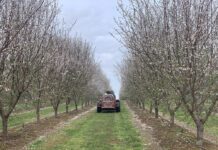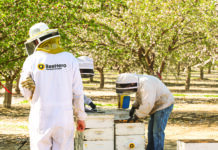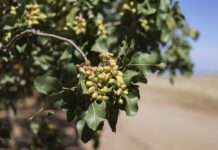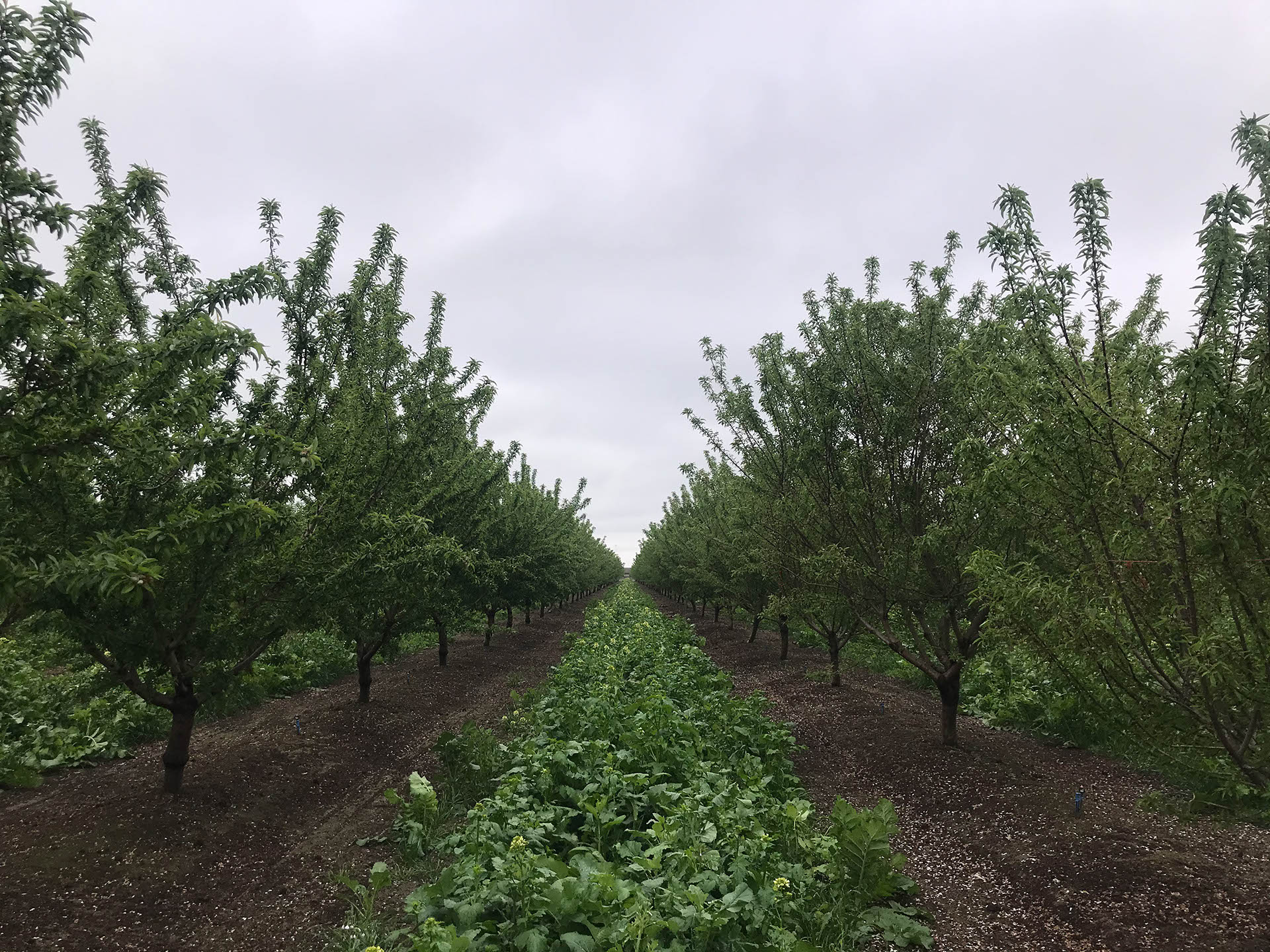
Integrating cover crops into tree nut orchards can promote soil health and dust reduction benefits, but achieving the desired results may take a reality check. The grower should consider their goals with a cover crop and how it fits into their management system, sources said. They should understand that cover crop goals are not achieved in one season and benefits from this practice may not be realized until the system has been in place for several years. As soil organic matter increases over time, cover crop viability also increases.
Choosing the Right Seed Mix
Pistachio and almond growers in the southern San Joaquin Valley have additional challenges establishing cover crops in their orchards compared to their fellow growers to the north. Germination isn’t always achieved with rainfall there, and the cost and effort of planting can be wiped out with a poor stand.
A recent cover crop trial in Kern County was designed to show how different cover crop seed mixes fared in the tougher growing conditions of that region. Kern County UCCE Community Education Specialist Shulamite Shroder said scarcity of fall/winter rainfall and compacted and erosion-prone soils presented challenges for the five seed mixes planted. The mixes chosen were not planted in nut orchards but planted in an open field and a vineyard to determine if a good stand could be obtained. Shroder said the mixes were supposed to be hardy enough to grow without irrigation, but to ensure germination, water was applied in November. Plantings received another irrigation at the end of February. The mixes were planted Nov. 5.
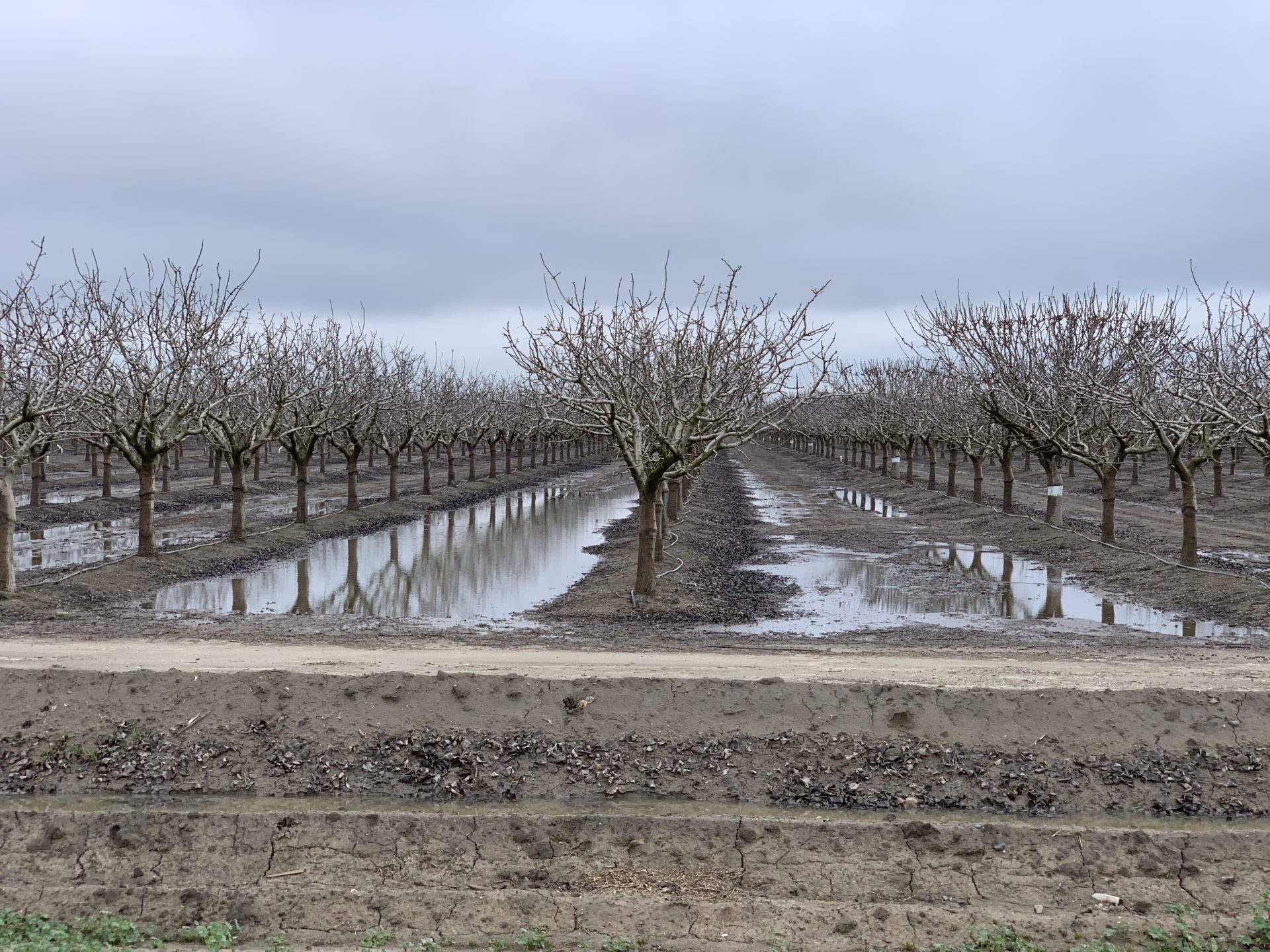
All the mixes would be suitable for planting in tree nut orchards, he said, but should be chosen based on site-specific conditions. Regions with high winter rainfall and orchards with less compacted soils are best suited to establishing good cover crop stands. Ease of decomposition is a factor in a decision to plant in almonds, while a mix that would take longer to decompose would work better in a pistachio orchard.
Shroder’s mixes included an annual plowdown mix, an erosion control mix, a soil crack mix, a clover mix and a mustard/pollinator mix. When considering a mix of species to plant, the main considerations are orchard irrigation system and water demand of cover crop, soil type and tillage, price and availability of cover crop seeds. The mustard/pollinator mix consisting of canola, mustards, and daikon, has the best stand of the five mixes and was planted in the vineyard test plot.
Silas Rossow, with the crop management company Cal Ag Solutions, said cover crop planting has accelerated in almond, pistachio and walnut orchards as growers look to address water infiltration and nutrient cycling challenges. Due to increased interest in cover crops, Rossow said CAS designed a simplified seeding tool adapted to California planting conditions. Their no-till cover crop seeder sets the seed into the soil with minimal soil disturbance. Several thousand acres of cover crops were planted with this tool starting just prior to the first rains last fall. Rossow said they continued to plant cover crops into February.
“We are trying to match the seed with the resource concerns,” Rossow said. Depending on the orchard needs, they are planting a seed mix that will work in specific conditions including compacted soils and erosion-prone soils.
“You can’t just throw seed out. There has to be a long-term goal for the cover crop to be a benefit for years to come. It takes time,” he added.
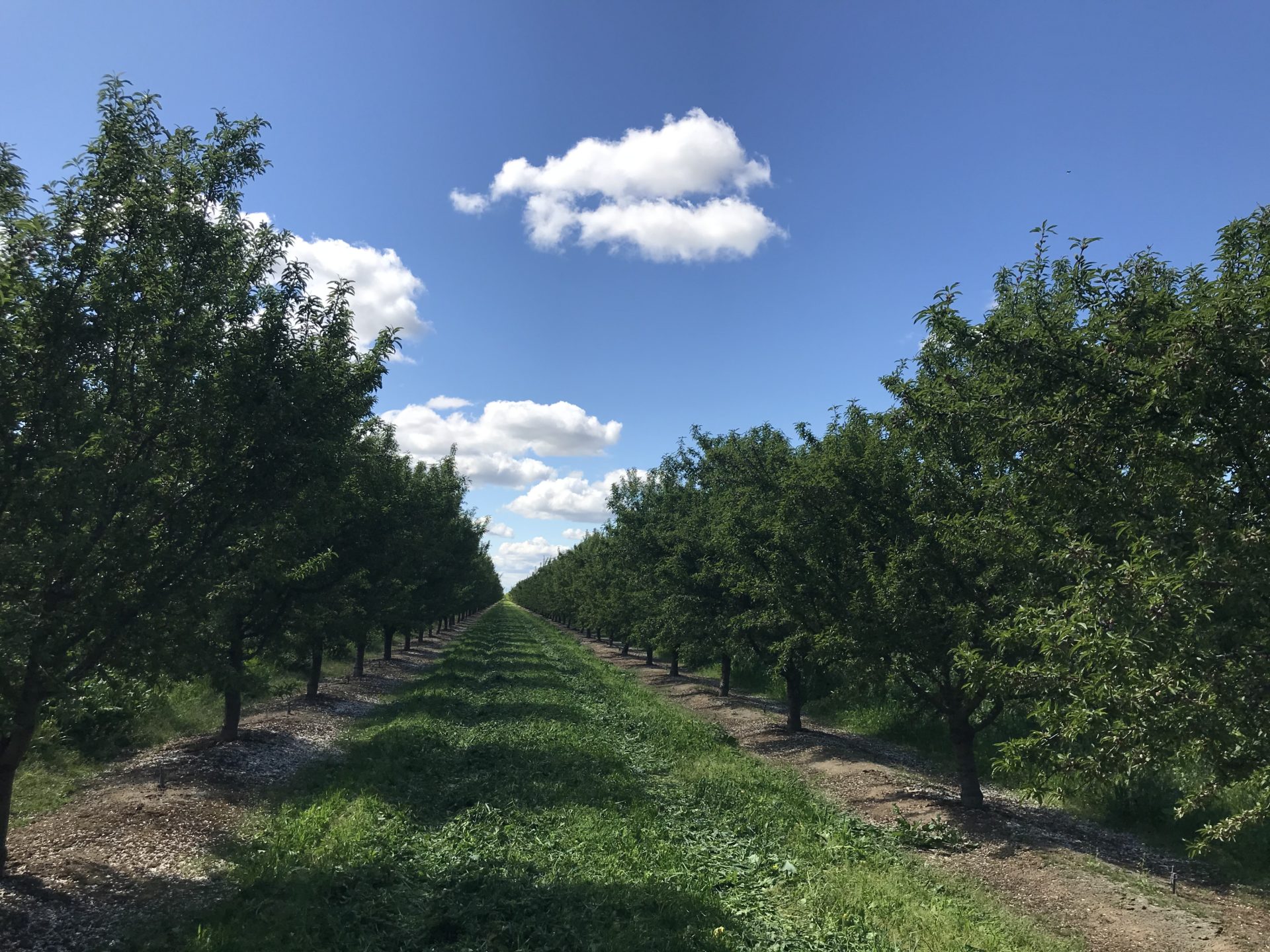
Cover Crop Research Review
A team of UCCE researchers and farm advisors reported in a cover crop research review that the practice is compatible with almond production, but has not been widely implemented throughout all growing regions due to operational and management concerns.
Shroder said growers might not have access to seeding equipment. They may also have to make time for removal of the crop prior to harvest.
The UCCE team said that while cover crops can provide significant soil health benefits, there remains a need for development of a management system growers can use.
The UCCE team’s cover crop trial in Kern County showed that after the first season where soil was heavily compacted, soil aggregate stability improved. Water infiltration improvements were also predicted for the second year. These changes suggest reduced risk of water runoff during rain events.
Their research also showed that if nitrogen released from a cover crop is synchronized with tree demand, less applied fertilizer is needed. Vetch in a cover crop provided rapid carbon and nitrogen turnover with 90 percent of nitrogen released within four weeks of termination when moisture levels were adequate. Compared to resident vegetation that grew in an orchard, a planted cover crop can contribute more nitrogen. In a Tehama Country trial, the cover crop contained on average 5.5-percent nitrogen compared to 3.7 percent in the resident vegetation. Merced County nitrogen was at 3.1 percent in the cover crop compared to 2.4 percent in resident vegetation.
Additional benefits cited by the research team are habitat and nutrient sources for pollinators and, if stands are good, weed suppression. Some brassica species showed potential as bio fumigants, but successfully using a cover crop to suppress nematodes depends on the level of infestation.
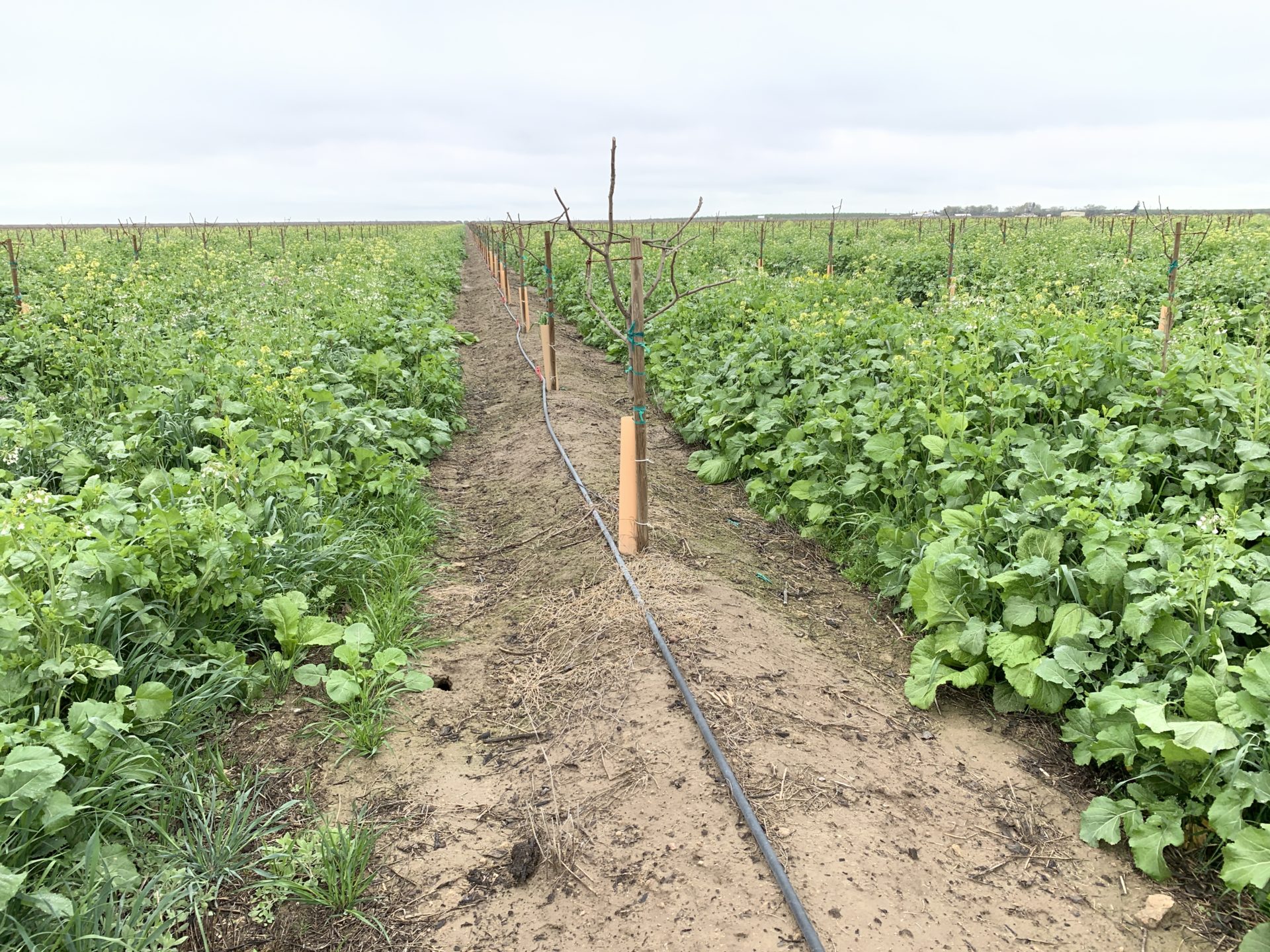
Residues, Water and Sanitation
The UCCE research team concluded that mowing and herbicide applications post bloom effectively removed the potential for interference with a clean harvest. Equipment, including the StickJack, can be used to remove larger woody residue.
According to the research team, cover cropping does not seem to interfere with NOW sanitation, and it may facilitate it by providing better access to orchards in the winter. The crop can also provide overwintering sites for beneficial insects and predatory mites.
If terminated at the right time and controlled adjacent to trees, competition for irrigation water can be minimal. Resident vegetation, weeds and native grasses in an orchard have been shown to require 35 percent more water than orchards with bare floors.
Mowing during the winter months may be necessary to control cover crop stand height. Frost risk in the spring can be mitigated by mowing the cover crop. Termination of the crop to prepare for almond harvest can be done with herbicides, mowing or rolling.
Justin Nay, pest control advisor on almond and pistachio ranches in the north and south Central Valley, agreed cover crops provide important benefits including improved water infiltration and better equipment access during winter months. The downside, he said, is that most cover crops, except those that are grass, tend to foster plant bugs, and mowing may disturb these pests and send them into the trees where they can cause crop damage. His strategy is to mow right before bloom and leave the crop until the end of May or early June. If the cover crop is intended to attract bees, he said, that may create pest control challenges in treating for plant bugs when bees are present.
Grower goals for their cover crops can vary as much as the seed mixes they plant in their orchards. Whether they plant for bee forage, soil health, or to just be able to access their orchards after a rainfall, a cover crop can be a solution for orchard challenges. Growers just need to make decisions for planting and managing those crops based on their specific site conditions.

Cecilia Parsons
Cecilia Parsons has lived in the Central Valley community of Ducor since 1976, covering agriculture for numerous agricultural publications over the years. She has found and nurtured many wonderful and helpful contacts in the ag community, including the UCCE advisors, allowing for news coverage that focuses on the basics of food production.
She is always on the search for new ag topics that can help growers and processors in the San Joaquin Valley improve their bottom line.
In her free time, Cecilia rides her horse, Holly in ranch versatility shows and raises registered Shetland sheep which she exhibits at county and state fairs during the summer.







